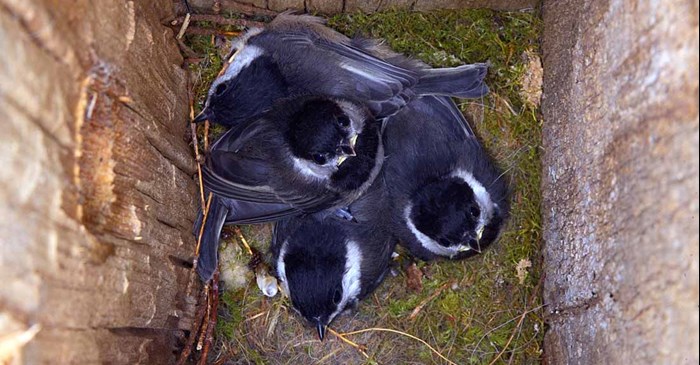Wild birds are discriminating nesters; they select areas that provide significant shelter from predators. Their nesting sites must also be located near abundant food and sources of nesting material. A study of any particular species uncovers some very interesting and specific nesting habits that are characteristic and unique.
For example, the Black-Capped Chickadees nest in wooded areas in the cavity of a tree or limb. They also love to nest in human-made birdhouses.
From April through June, you can observe Chickadees building their own nesting sites by digging a hole in a rotten piece of wood or tree trunk, usually anywhere from four to fifteen feet off the ground. They are so particular about their nesting sites, that they may excavate several before settling into the ideal home. And if the nest is disturbed at all by predators, they just pack up, leave, fly a distance and build again.
A female Chickadee builds the nest with soft materials like moss and it could take several days to finish a single nest. Her eggs, usually six, are speckled white, and she incubates them for about two weeks. Chickadees could raise up to two broods per season. The male feeds the female during incubation, calling her from the nest if she doesn’t call him first. Then the male continues to feed the female even after the baby “chicks” have hatched. The two cooperate thereafter, both feeding the young, which leave the nest in about sixteen days.
A couple of weeks later, mom and dad will no longer need to feed the youngsters, as they test their wings and begin feeding on their own.
The Ruby-Throated Hummingbird, however, is a tough one to find and observe. This bird’s nest is a cup made of plant down and spider webs, usually covered with flakes of lichen. You’ll find it anywhere from five to twenty feet above the ground on a horizontal limb that slopes downward. The Hummingbird’s breeding goals come in twos: They try to raise two broods per season, and they incubate two white eggs for about twenty days. It takes another twenty days for the young hummers to leave the nest after hatching.
